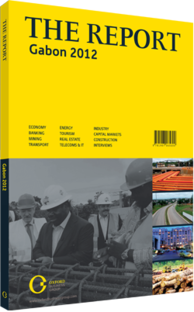Cashing in: Rubber and palm oil projects should help stimulate the sector
Increased public and private investment is needed to revitalise Gabon’s agriculture sector and increase its contribution to GDP beyond the current level of 3.8%. Gabon’s rich natural environment, conducive to many agricultural products, has already drawn the attention of international investors.
Two new joint ventures in cash crops set to begin in 2012-13 should help to harness the country’s considerable potential. Operator Société d’Investissement pour l’Agriculture Tropicale (SIAT) Gabon, which has been active in the local market since 2004, currently maintains 9500 ha of rubber plantations in the country’s northern provinces. In addition to industrial plantations, Gabon has approximately 3000 ha of village plantations, which help to stimulate both the economic and social development of rural areas.
WORKING TOGETHER: Gabon announced a partnership in January 2012 with the Singapore-based multinational Olam to create a large-scale rubber plantation for a total investment of $183m. The plantation, which will cover 28,000 ha in the northern Bitam area of Woleu-Ntem Province, will start by the end of 2012. The first harvest is projected for 2020 once trees have reached maturity, and initial output estimates vary between 2 and 2.2 tonnes of natural latex per ha. The joint venture also includes the construction of a processing facility with a capacity of 225 tonnes per day.
Rubber cultivation in the north provides several benefits. Weather conditions are ideal for the cultivation of rubber trees, and the proximity to the border with Cameroon and Equatorial Guinea should help to foster more regional exchange. In addition, the country’s urbanisation trend has been less pronounced in this traditionally agricultural area, where upwards of 40% of the population remain in rural areas.
LOOKING GOOD: Increased turnover from existing rubber cultivation over the last few years bodes well for the new project. The 2010 Scorecard of the Gabonese economy showed national production of natural latex increased 16.6% year-on-year (y-o-y) to reach 38,967 tonnes in 2010, and granulated rubber production increased by 9.6% y-o-y to 19,559 tonnes.
While there is a slow return on investment in rubber, with the first harvest coming seven years after the original plantation, global prices promise considerable medium- to long-term benefits. Demand for rubber has seen around 3% annual growth in recent years. However, the difficult economic climate and resulting slowdown in the automobile industry had an impact on global rubber prices in early 2012. In response, the purchase price for Gabonese farmers was reduced in June 2012 to CFA600 (€0.90) per kg.
WELL IN HAND: The government also signed a 2010 agreement with Olam to launch a joint venture in palm oil. Olam secured access to 100,000 ha of land in Estuaire Province and Ngouiné Province and has begun the initial plantation of 50,000 ha, which may be scaled up to 100,000 ha in the next five years. Olam has indicated that Gabon has the capacity to become a leading global producer of palm oil by 2020, and the company hopes to produce 160 tonnes of palm oil per hour once the project is in full swing.
There are strong possibilities for the market, according to Gert Vandersmissen, managing director of SIAT Gabon. Demand for palm oil is growing, and Africa imports roughly 2m tonnes per year. While much of the palm oil being produced by SIAT is commercialised on the local market as soap and cooking oil, most of Olam’s production will be exported, although 25 % is dedicated to internal market if there is demand. Despite high fixed costs and labour needs, “palm oil is still important as there is a land shortage worldwide in areas where palm can be grown, and a growing world population means demand is high,” said Vandersmissen.
The success of new agricultural projects is critical to revitalising the sector. Agriculture, once an anchor of the economy, suffered from declining investment after the discovery of oil in the 1970s. While the segment must overcome a lack of trained locals and transport issues, they may help increase and diversify exports.
You have reached the limit of premium articles you can view for free.
Choose from the options below to purchase print or digital editions of our Reports. You can also purchase a website subscription giving you unlimited access to all of our Reports online for 12 months.
If you have already purchased this Report or have a website subscription, please login to continue.

